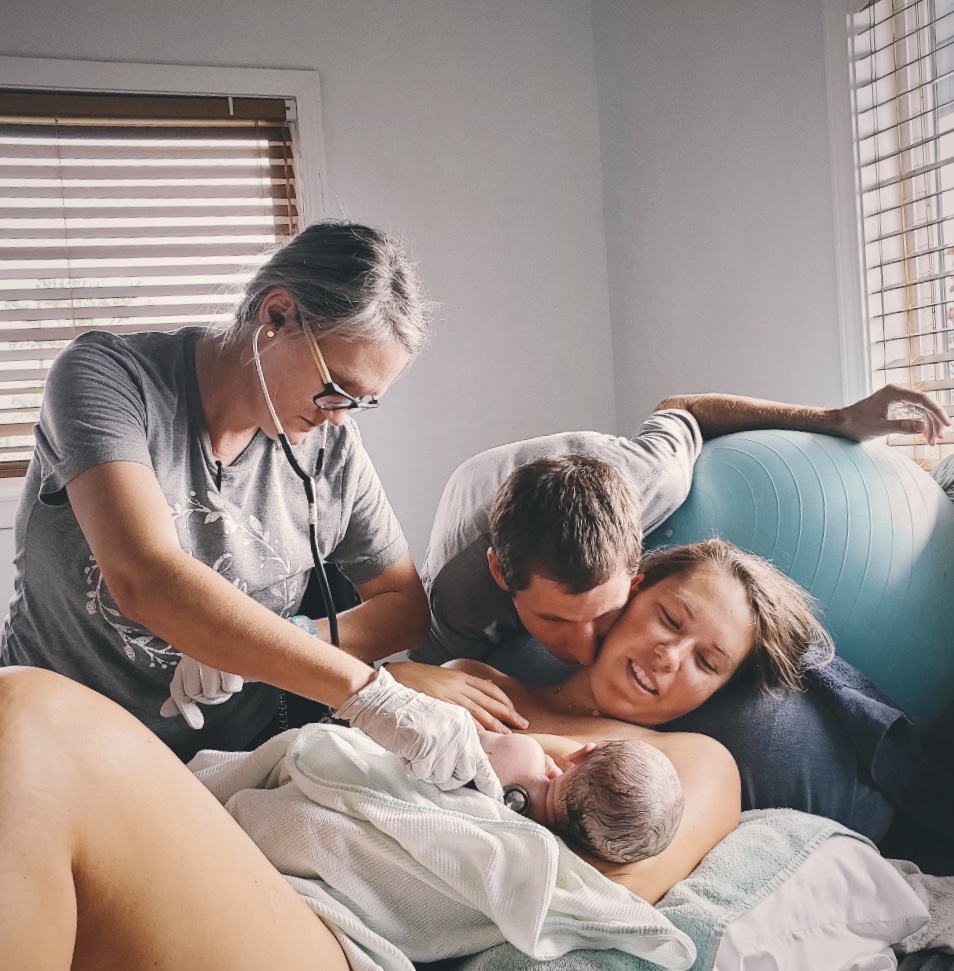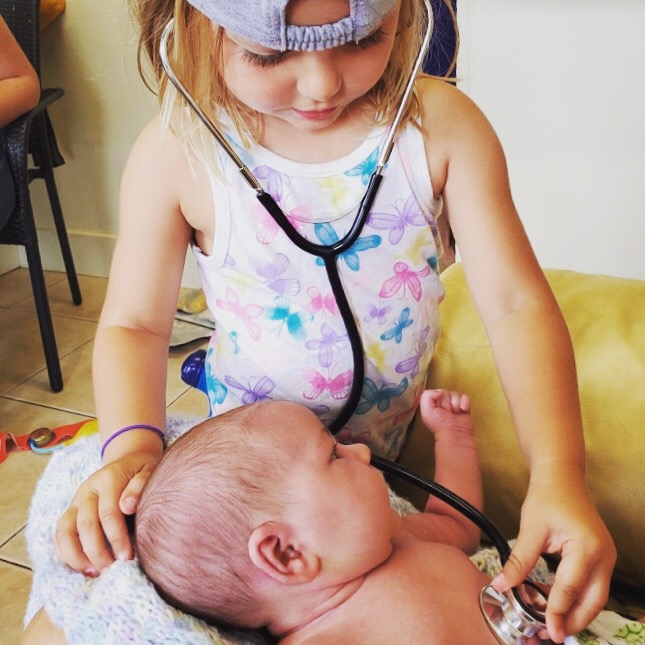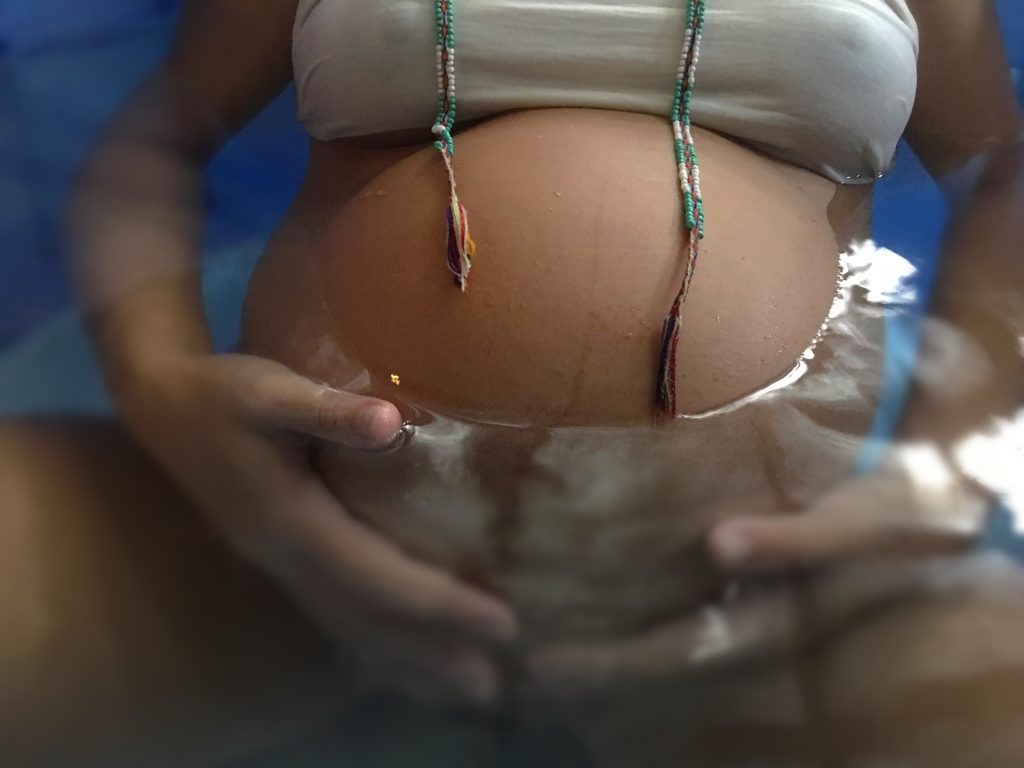Choosing a midwife is no small task, and one that must be done only after careful and thorough consideration. You will have many questions as you search for the right birth team. Below you will find some of the most common questions we are asked:

Is a home birth safe?
“Birth is as safe as life gets.” Harriette Hartigan
Study after study has shown the safety of home birth. Some nations, such as Holland, see the vast majority of their moms choosing a home birth instead of a hospital birth. We all know that there was a time when home birth was the only way that anyone had a baby. It is only very recently that women began going to the hospital to birth their baby. Now there is a move towards reclaiming the safe and intimate nature of birth among close family and friends. While some women choose to birth in a hospital, we find that those who birth at home are generally more comfortable, have less pain and fewer labor difficulties, and an overall better experience. We as your birth team, in partnership with you, will take every precaution to provide safety for you, your birth and your baby. The goal is to allow you the birth experience you want and make it as comfortable, memorable, and safe as possible.
Read More:
Home Birth Safety
Home Birth vs. Hospital Birth
Pros and Cons
Home Birth Safety Outcomes
What is Home Birth
What is a CPM?
A CPM is a Certified Professional Midwife. CPMs are credentialed through the North American Registry of Midwives (NARM) and are recognized as autonomous birth professionals in many states within the United States. CPMs are non-nurse midwives and generally work in out-of-hospital settings such as free standing birth centers, but more commonly CPMs attend births in the home. As a CPM candidate you must apprentice under an approved preceptor for a minimum of 2 years and pass a nationally recognized written and clinical exam prior to certification. To maintain certification, midwives must be in good standing with NARM and maintain current CPR and NRP certifications along with continuing education courses. Certified Professional Midwives are also now recognized by the American College of Obstetricians and Gynecologists (ACOG) as credible and appropriate practitioners in the care of healthy pregnant women.
Read more here:
What is a CPM?
Professional View of CPMs
North American Registry of Midwives
Are CPM’s lay midwives?
“A Certified Professional Midwife (CPM) is a knowledgeable, skilled and professional independent midwifery practitioner who has met the standards for certification set by the North American Registry of Midwives (NARM) and is qualified to provide the midwifery model of care. The CPM is the only midwifery credential that requires knowledge about and experience in out-of-hospital settings.”
Traditional, or lay midwives, are often seen as different in their scope of practice. Many of the actual differences lie in the reasons behind why some midwives have chosen to become a traditional/lay midwife instead of earning a credentialed certification. They have determined not to be governed under any specific group nor follow a specific set of guidelines that encompasses regulation or licensing. Unlike a midwife with a CPM certification, they determine for themselves what is in their scope of practice.
“In addition, there are midwives who—for religious, personal, and philosophical reasons—choose not to become certified or licensed. Typically they are called traditional, (lay) or community-based midwives. They believe that they are ultimately accountable to the communities they serve; or that midwifery is a social contract between the midwife and client/patient, and should not be legislated at all; or that women have a right to choose qualified care providers regardless of their legal status.”
We strongly encourage all moms looking for a midwife to research the differences in home birth midwives in their area, especially when it comes to training and certification.
What is an LM (Licensed Midwife)?
LM’s are licensed midwives. This means each licensed midwife meets the clinical requirements and competencies as set forth by the state. A licensed midwife is an individual who has been recognized and issued a license to practice midwifery by a committee such as a Medical Board in a particular state.
Read More:
What is a CPM and what is a lay midwife?
How do you determine your prices?
Our prices are determined based on the local home birth economy and are comparable across the state. As a CPM/LM lead midwifery group we do charge according to what our peers are charging in Montana. We offer sliding scale rates for those who qualify. Money should never be the reason you do or do not choose a care provider. We therefore encourage you to research all midwives in your area, their training, and their scope of practice before deciding on a care giver.
Do you accept insurance?
We can help you bill most insurances in the state of Montana. However, some insurances do not cover home births. Please contact us for verification of benefits (VOB) if you believe your insurance will cover a home birth and we will be happy to file.
Most LMs, including ourselves, are willing to work with mothers and self-pay families to ensure a safe home birth is provided to all who seek midwifery care. We strongly encourage women who are pregnant, or considering pregnancy, to explore Christian Healthcare Ministries or Samaritan Ministries. Both are health-sharing organizations who fully cover home birthing families.
How do I get my lab work done?
Montana Birth & Midwifery Services offers in-house lab services. This means your blood will be drawn in the office and sent to the nearest lab for processing. Insurance does not typically cover in-house lab draws, so if you are wanting to file insurance for your lab work we will refer you to the local hospital. They are typically able to accept and file your insurance. We do not currently offer in-house ultrasounds and you will be referred to a nearby radiologist for a diagnostic ultrasound.
Can my other children come to prenatal visits and be at my birth?
Yes, siblings are welcomed into all prenatal visits and the home birth setting. We believe the only way to truly change our birth culture is for little boys and girls to see the birth process as normal and beautiful. Often mothers with young will go into labor at night. It can, and often does happen, that a mother will surrender to labor after tucking her children into bed. They will awaken in the morning with a brand new brother or sister. Children almost always exalt in the birthing process when they are awake and in the room, and it rarely if ever frightens them. We do ask each family to have a designated child care provider, be it family or friend, in the home during the time of birth. They do not need to be in the birthing room, but should the child need extra attention, or in the event of a transfer, care should be at hand.
Read More:
Home Birth and Siblings
Preparing an Older Sibling
Siblings Attending a Home Birth
Home Birth Children’s Book
Books For Children

What do you bring to my birth?
Your birth team will bring your birth tub at 36 weeks, should you choose a water birth. We also carry to each birth the following:
Doppler
Urine Strips
Sterilized Birth Instruments
Stethoscope and BP Cuff
Sterilized Suture Pack
Infant Scale
Non-Sterile Gloves
Fetoscope
Oxygen tank
Infant Ambubag
Herbs and Medications
Syringes and Needles
DeeLee
Sterile Cath Tray
Pulse oximeter (neonatal and adult)
Oils
Miscellaneous Birthing Items
Drainage Pump
How do I prepare my home for birth?
You will need to begin by gathering the items on Preparing For Your Home Birth list. If you have younger children you will need to talk with them about what they should expect when you give birth. Be sure to have carefully installed the newborn car-seat in the car and have the car ready should a non-emergent transfer be needed. If you are planning a water birth, your tub will have been delivered at the 36 week home visit. You will want to have your husband or partner set up and fill the tub when your contractions are regular and approximately 4 minutes apart from the beginning of one until the beginning of the next. Be sure your home is tidy and ready to receive your newborn and the birthing team.
What if there is an emergency?
90% of all births are beautiful and uneventful. However, should your birth be included in the 10% requiring more assistance, your midwife and the birth team are prepared in the event of an emergency. All participants are trained in recognizing and stabilizing shock, CPR and NRP. Your midwife is prepared with anti-hemorrhagic techniques, herbs and preparations should bleeding be excessive following the birth.
What if I have to transfer?
Most transfers are non-emergent. More often than not a transfer will occur due to maternal exhaustion. However, there are times when transport is necessitated. If it is a non-emergent transfer, the mother can transfer in her private vehicle, the midwife or birth assistant will ride with the mother and the rest of the birth team will follow. In the event of an emergency, we will call 911. Regardless of the reason, the midwife and your birth team will go with you to the hospital.
UPDATE: Due to Covid 19, Midwives may not be able to accompany you to the hospital. We will do our best to be by your side, but please know current rules may prohibit this. We will make sure you are transferred safely and we will follow up with you upon your arrival back home.
When should I call the midwife?
When you feel your first contractions you will want to notify your midwife that you think you are in labor. Rest in early labor is the foundational key to successful labors and births, especially for first-time moms. Should you call your midwife and your contractions are 10 minutes apart she will likely tell you to take a warm bath and go to bed. When possible, the conservation of energy is paramount. You will likely want your doula with you prior to the arrival of the midwife. The birth team at Montana Birth & Midwifery Services work together. After the arrival of the doula she will also be in communication with the midwife and can notify her of your progress. Active labor is generally signified when contractions are 4 minutes apart, from the beginning of one contraction until the beginning of the next, lasting 60 seconds in length and having been in this pattern for at least an hour. At this point, your midwife will want to know you are ready for her. You will know the difference between early labor and active labor when you can no longer walk and talk through the contraction.
Read More:
How to Tell if it’s Labor
First Stage of Labor
Real vs. False Labor
Active Labor
Signs of Labor
Labor Indications
Three Phases of Labor
Do you attend water birth?
Yes! Water birth is encouraged for all mothers and especially first time or VBAC moms. We find not every mother wants to give birth in the water, but almost all want to labor in the tub. Water birth reduces pain, allows for mobility and helps support the perineum during the birthing process. During labor and when the baby is about to be born your midwife and birth team will ensure the water remains warm enough to support your new baby. Following the birth, the tub will be drained to facilitate the delivery of the placenta.

Read More:
Water Birth
What is a Water Birth Like?
Water Birth Research
Who will come to my birth?
Your birth team will consist of a midwife, 2 birth assistants and doula. Although birth is a time of celebration we encourage moms and families to keep the participants on the day of labor to a minimum. The work of birth is done best when done in intimacy and privacy. Our team will work hard to ensure we give you the privacy you need while remaining the gatekeepers of safety.
Can my husband catch my baby?
Yes!! We encourage mothers and fathers to both catch their baby, and we are there for their support. During prenatal visits, we discuss with families how this might look during the birthing process. This is your baby and we are there to ensure the safety of both you and your baby and to offer you supporting hands. It gives us no greater joy than to help you birth your baby into your own hands or into the hands of those who love you so very much.
A Home Birth Video of a First Time Mom with Dad Catching. Enjoy!
What do you do with the placenta?
This depends on you. First, after the birth of the placenta, your birth team will thoroughly inspect your placenta to ensure its health and note any anomalies in structure. Following examination, there are several options for placental use or disposal. Some women want placental encapsulation, and should you choose this option, we offer services to do so. Others prefer to plant a tree in memorial of the day of birth and the placenta is placed under the tree in remembrance. Still, others have no expressed plans for the placenta and choose to donate it for educational purposes. Placentas are blood products and proper disposal or care is paramount to the health of the community. (See our placenta page for prices.)

Do you offer childbirth classes?
Yes, we offer Childbirth Education classes both in-person and on-line. To find out more about upcoming in-person classes you can go HERE. Our online sessions are as follows:
Session One: Born for This
Session Two: Optimal Position in Pregnancy, Labor and Birth
Session Three: Early Signs, Stages of Labor & Coping
Session Four: Relaxation, Visualization, and Breathing
Session Five: Providers, Expectations, Induction, and Medications
Session Six: The Amazing Newborn
Session Seven: Breastfeeding
Session Eight: Postpartum
Do you recommend a doula?
This is one of the easiest questions to answer…YES! Absolutely, we recommend a doula. Doulas are the best friends of pregnant women. There are many statistics which show doula attended births significantly decrease the need for medications and interventions and also are shown to shorten the length of many labors. Doulas are known to have attended birth from ancient days and any woman who has had a birth with a doula and without can tell you the multitude of reasons why you should choose to have a professional birth companion. Montana Birth & Midwifery Services provides doula care for all moms who choose us as their birth team and it is included in the global fee.
Read More:
Evidence for Doulas
Benefits of a Doula
What is a Doula?
Do You Need a Doula?
All About Doulas
Do you attend breech births?
Currently Montana Birth & Midwifery Services does not attend known breech births within the United States or Montana. There can always be the breech that surprises everyone. We work hard to know our clients and their babies. From the initial visit your midwife will feel your belly and, utilizing the Leopold’s Maneuver at each subsequent visit, will do her best to determine the position of the baby with plenty of time to turn a breech baby into a cephalic presentation. Only 1%-3% of all pregnancies will be true breech positions at the time of birth. We will work with you long before birth to assure your baby is in the best position to be born with ease.
Read More:
Birth Positioning
Do you attend VBAC births?
We do choose to serve women who have had a previous cesarean. We carefully screen women to ensure, to the best of our ability, they are qualified candidates for a VBAC. The body is resilient and a woman should not be immediately disqualified from a vaginal birth simply because she has had a C-Section in the past. In fact, 90% of women who have undergone cesarean deliveries are candidates for VBAC. A woman seeking a VBAC should be meticulous in her nutrition and should have allowed her body time to heal, providing herself every possible chance for a wonderful outcome. VBAC moms in Montana must have a secondary consultation, which we can help you secure, to ensure you are a low-risk and healthy candidate for a vaginal birth after cesarean.
Read More:
VBAC Facts
VBAC
13 Myths About VBAC
VBACs – What You Need to Know
VBACs In-Depth
VBAC vs. Repeat C-Section
To VBAC or Not to VBAC
Do you work with students?
Our goal at Montana Birth & Midwifery Services is two-fold:
1. We long to serve mamas both here and around the world. It is truly our love language to walk alongside women as they grow and birth new life.
2. It is our mandate to ensure the midwifery model of care is passed to the next generation of women both here in the US and in the developing world. To this end, we encourage and invite midwifery students into our lives and practice. Our students are professional, reliable, confident and caring. Students are required to maintain HIPPA confidentiality and are certified as doulas, childbirth educators, birth assistants and are qualified in CPR and NRP.